Service history
During World War I, Venturous took part in the first deployment of operational magnetic bottom mines when she joined the destroyers HMS Abdiel, Tarpon, Telemachus, Vanoc, and Vanquisher, escorted by eight other destroyers, in laying 234 Sinker Mk1(M) mines in the North Sea off the coast of Flanders, Belgium, about eight nautical miles (15 km) north of Dunkirk, France. German forces did not interfere with the operations. She also participated with Abdiel, Tarpon, Telemachus, and Vanquisher in the second operation to lay Sinker mines on 22 August 1918, in the North Sea off Flanders about 17 nautical miles (31 km) north of Zeebrugge, Belgium, supported by Royal Air Force aircraft which patrolled to prevent German aerial observation of the operation. [3]
As the result of a reorganization of Royal Navy destroyer flotillas in 1921, Venturous became part of the 9th Destroyer Flotilla along with the destroyer leaders HMS Douglas, Valentine, and Valkyrie and the destroyers Vanessa, Verdun, Vesper, Vivien, and Whitley. The entire flotilla was transferred to the Reserve Fleet on 4 April 1922 and laid up at Rosyth, Scotland, with reduced crews, but it was recommissioned on 8 April 1925 and renumbered as the 7th Destroyer Flotilla. [4]
Final disposition
After World War I, the United Kingdom received the passenger liner SS Bismarck from Germany in 1920 as a war reparation, and she was sold to the White Star Line, later the Cunard White Star Line, in which she served as RMS Majestic. In 1936, Cunard White Star retired Majestic and sold her to Thos. W. Ward for scrapping, but because of legal requirements imposed under the agreement transferring Majestic to the United Kingdom as a war prize, the British government instead took control of Majestic and assigned her to the Royal Navy. To pay Thos. W. Ward for Majestic, the Royal Navy agreed to transfer 24 old destroyers with a combined scrap value equivalent to that of Majestic to Thos W Ward for scrapping. Venturous was among these, and her transfer to Thos W Ward for scrapping took place on 24 August 1936. She was scrapped at Inverkeithing, Scotland. [1]

HMS Bellona was one of two Boadicea-class scout cruisers built for the Royal Navy in the first decade of the 20th century. The ship served as the flotilla leader for the 2nd Destroyer Flotilla from her completion in 1910 until 1913 when she was transferred to the 1st Battle Squadron. Bellona spent the bulk of World War I with that squadron. She was present at, but did not fight in, the Battle of Jutland in mid-1916. The ship was converted into a minelayer in mid-1917 and made four sorties to lay her mines before the end of the war. Bellona was reduced to reserve in 1919 and sold to be broken up for scrap in 1921.

HMS Boadicea was the lead ship of her class of scout cruisers built for the Royal Navy in the first decade of the 20th century. She led the 1st Destroyer Flotilla from completion until the ship was transferred to the 3rd Destroyer Flotilla in mid-1912. A year later Boadicea was reassigned to the 2nd Battle Squadron and she spent the bulk of World War I with that squadron. The ship was present at, but did not fight in, the Battle of Jutland in mid-1916. Boadicea was converted into a minelayer at the end of 1917 and made three sorties to lay her mines before the end of the war. She was placed in reserve after the war and taken out of service in 1920. The ship was used for harbour service at Dartmouth until she was sold for scrap in 1926.

HMS Valkyrie was a First World War V-class flotilla leader of the Royal Navy. She was one of two destroyers ordered in July 1916 from William Denny & Bros. Ltd shipyard under the 9th Order for Destroyers of the Emergency War Program of 1916–17. She was originally to be called HMS Malcolm but was renamed before being completed. The name Malcolm was later assigned to another destroyer leader.

HMS Wrestler (D35) was a V and W-class destroyer built by the Royal Navy during the First World War and active from 1939 to 1944 during the Second World War. She was the first Royal Navy ship to bear that name, and the only one to do so to date.
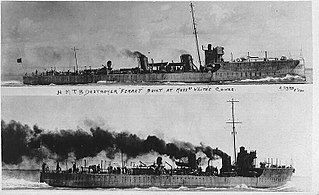
HMS Ferret was an Acheron-class destroyer of the Royal Navy that served during World War I and was sold for breaking in 1921. She was the sixteenth Royal Navy ship to be named after the domestic mammal Mustela putorius.

HMS Sandfly was an Acheron-class destroyer of the Royal Navy that served during World War I and was sold for breaking in 1921. She was the seventh Royal Navy ship to be named after the small biting fly of the same name.
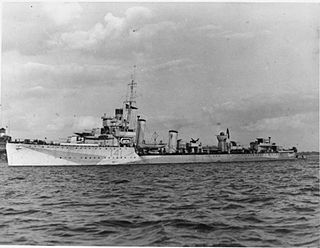
HMS Walpole (D41) was a W-class destroyer of the Royal Navy.

HMS Vesper was a V-class destroyer of the British Royal Navy that saw service in World War I and World War II.

HMS Vivacious (D36) was a V-class destroyer of the British Royal Navy that saw service in World War I and World War II.

HMS Vanquisher (D54) was a V-class destroyer of the British Royal Navy that saw service in World War I and World War II.

HMS Vectis (D51) was a V-class destroyer of the British Royal Navy that saw service in World War I and the Russian Civil War.
HMS Violent was a V-class destroyer of the British Royal Navy that saw service in World War I and was in commission from 1917 to 1937.

The first HMS Vehement was a V-class destroyer of the British Royal Navy that saw service in World War I. She spent her short career in minelaying operations in the North Sea before striking a mine and sinking in 1918.

The first HMS Walrus (D24) was a W-class destroyer of the British Royal Navy that saw service in the final months of World War I.
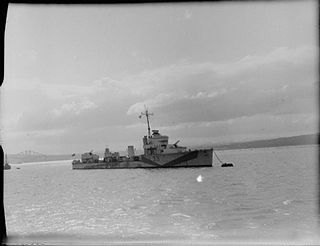
HMS Vivien (L33) was a V-class destroyer of the British Royal Navy that saw service in World War I and World War II.

HMS Viceroy (D91) was a W-class destroyer of the British Royal Navy that saw service in the final months of World War I and in World War II.

The eighth HMS Worcester, was a Modified W-class destroyer of the British Royal Navy that saw service in World War II. She later served as an accommodation ship as the second HMS Yeoman.

HMS Abdiel was a Marksman-class flotilla leader of the Royal Navy, built by Cammell Laird during the First World War. She was converted to a minelayer during construction, commissioning during 1916, and served at the Battle of Jutland. Following the end of the war, Abdiel served in the Baltic during the Russian Civil War. She was sold for scrap in 1936.
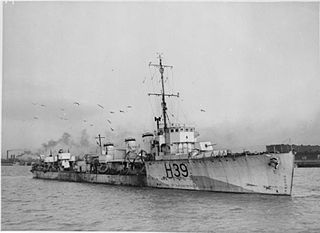
HMS Tarpon was a Royal Navy R-class destroyer constructed and operational in the First World War. She is named after the large fish Tarpon; one species of which is native to the Atlantic, and the other to the Indo-Pacific Oceans. Tarpon was built by the shipbuilders John Brown & Company at their Clydebank shipyard and was launched in March 1917 and entered service in April that year.
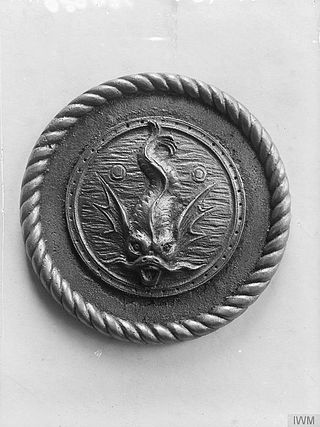
HMS Telemachus was a R-class destroyer of the British Royal Navy that took part in the First World War. She was built in 1916–1917 by the Scottish shipbuilder John Brown at their Clydebank shipyard. Telemachus was modified to serve as a minelayer, laying minefields in the German Bight and English Channel to restrict the operation of German submarines. The ship survived the war and was sold for scrap in 1927.
This page is based on this
Wikipedia article Text is available under the
CC BY-SA 4.0 license; additional terms may apply.
Images, videos and audio are available under their respective licenses.



















